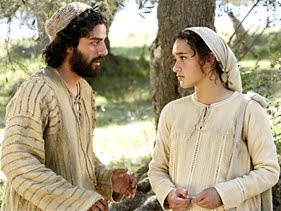How God Used Mary and Joseph’s Strengths in Solving Problems
The Christmas story offers powerful lessons about strengths.
God specially selected Mary and Joseph to bring His Son into the world and raise Him. He used their different strengths in processing information, solving problems, managing change, and facing risk – each in unique ways.
When it came to solving problems, Mary and Joseph had two distinct approaches. Both approaches were valuable in the outcome of our Savior’s birth.
Mary’s Approach: Humble and Agreeable
Put yourself into the sandals of a 15-year-old first century Jewish girl. You just discovered you are pregnant, yet you’ve never been intimate with a man. How will your fiancé react? And more frightening, in your culture an out-of-wedlock pregnancy can mean death by stoning.
If you were Mary, an unplanned pregnancy was a clear problem.
Consider the ways others might go about solving it: fear … demands … aggressive defense … anger … lies … denial … a full-blown temper tantrum …
A classic Reflective, Mary’s response was humble and unpretentious: “I am the servant of the Lord,” she said. “Let it be to me according to your word” (Luke 1:38, ESV).
Once confronted with the problem, Mary faced it quietly and unobtrusively. That is one reason why Christmas carols describe her as “gentle, meek, and mild.” In a low-keyed response to her problem, Mary accepted God’s call on her life and then set off to visit her cousin Elizabeth, also pregnant, for support and encouragement.
Joseph’s Approach: Responsible and Purposeful
Joseph, too, faced a problem: his fiancée was pregnant … and he was not the baby’s father.
Yet “Joseph, being a just man and unwilling to put [Mary] to shame, resolved to divorce her quietly” (Matthew 1:19, ESV).
Even in the midst of his humiliation, Joseph resolved to be purposeful in solving the problem. Rather than operating impulsively, he approached the situation carefully and deliberately, giving consideration to the outcome for Mary and the child. He was not demanding or aggressive. Rather, when God spoke to Joseph in a dream, Joseph weighed the information and used it purposefully. He took Mary as his wife and raised Jesus as his son.
Problem Solving: God Combines Different Strengths
When it came to solving problems, Mary and Joseph represent two unique approaches. Mary was a high Reflective. Joseph represents a neutral in the middle of the Problem Solving scale. They both contrast with Aggressives – those individuals whose strengths work to solve problems quickly and decisively.
But these two people offered specific strengths for the situation at hand – the birth of the Savior of the world. In an overwhelming situation, Mary placed the outcome in God’s hands and made herself available to Him. Her Reflective style represents a “long fuse” in solving problems.
Meanwhile, Joseph demonstrated a sense of responsibility and resolve. He was careful to guard what had been entrusted to his care (1 Timothy 6:20, NIV).
The couple’s combined humility and sense of purpose in solving their immediate problem – an unplanned pregnancy – shows how God uses others’ strengths to complete us in the situation of the moment.
And their partnership represents how our strengths can be used by God for long-term impact. Mary and Joseph combined their strengths to welcome the Son of God into the world.
Strengths in the Christmas Story
Part 2: Two Ways to Process Information
Part 3: Two Ways to Manage Change
Ways the Disciples Used Their Strengths
Part 1: Managing Change – Let’s Go or Let’s Make a Plan
Part 2: Processing Information: That’s Wonderful or Give Me Proof

